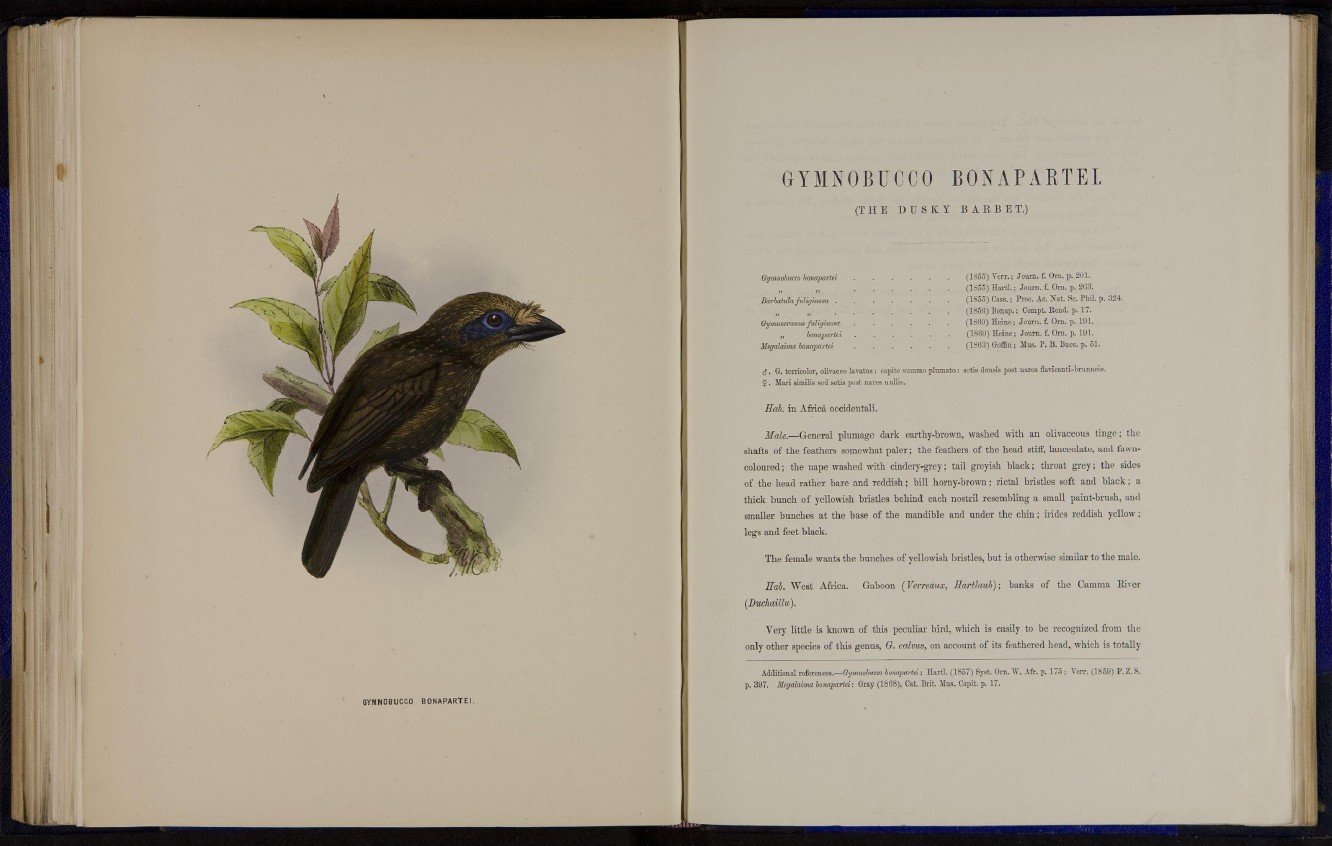
GYMNOBUCCO B O N A P A R T E!
( T H E D U S K Y B A R B E T .)
Gymnobucco bonapartei (1855) Verr.; Journ. f. Orn. p. 201.
(1855) Hartl.; Journ. f. Orn. p. 263.
Barbatulo- fuliginosa (1855) Cass.; Proc. Ac. Nat. Sc. Phil. p. 324.
(1856) Bonap.; Compt. ltend. p. 17.
(1860) Heine; Journ. f. Orn. p. 191.
(1S60) Heine; Journ. f. Orn. p. 191.
(1863) Goffin ; Mus. P. B. Buce. p. 51.
capite summo plumato: setis densis post nares flavicanti-brunncis.
<J. G. terricolor, oliváceo lavatus: capite si
2 • Mari similis sed setis post nares nullis.
11(d). in Africa occidental!
Male.—General plumage dark earthy-brown, washed with an olivaceous tinge; the
shafts of the feathers somewhat paler; the feathers of the head stiff, lanceolate, and fawncoloured
; the nape washed with cindery-grey; tail greyish black; throat grey; the sides
of the head rather bare and reddish; bill horny-brown; rictal bristles soft and black; a
thick bunch of yellowish bristles behind each nostril resembling a small paint-brush, and
smaller bunches at the base of the mandible and under the chin; irides reddish yellow;
legs and feet black.
The female wants the bunches of yellowish bristles, but is otherwise similar to the male.
Hob. "West Africa. Gaboon (V e r r e a u x , Hartlaub); banks of the Camma River
(Duchaillu).
Very little is known of this peculiar bird, which is easily to be recognized from the
only other species of this genus, G. calvus, on account of its feathered head, which is totally
Additional references.—Qymnobucco bonajxirtei: Hartl. (1857) Syst. Orn. W. Afr. p. 175 ; Verr. (1859) P. Z. S.
p. 397. Megalaima bonapartei: Gray (1868), Cat. Brit. Mus. C'apit. p. 17.